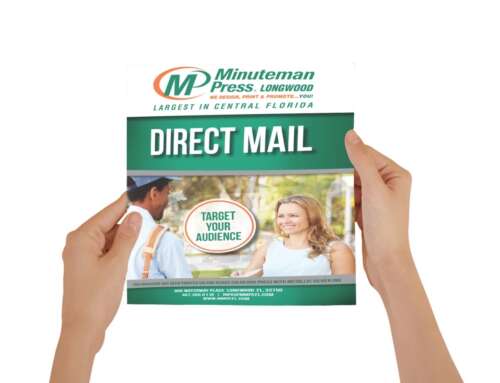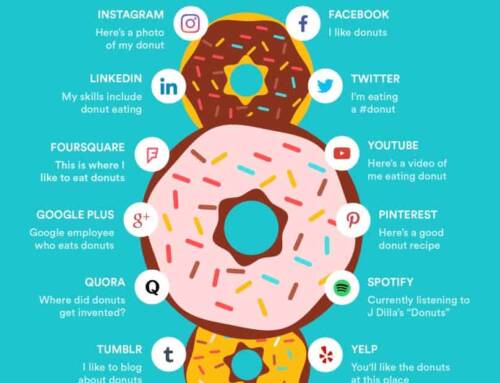
7 Tips for creating a great website for your business
Getting a website for your business is great—people can find you online, it increases your visibility, which leads to more clients and more sales. However, if your website isn’t very user-friendly or focused, it can actually be a huge turn-off for customers, accomplishing the exact opposite for your company.
Instead of turning away potential customers, design your website to invite them in with an engaging landing page and a clear call-to-action. Below are a few simple tips we use at Minuteman to create beautiful, useable websites for our clients.
-
Choose Your Domain Name Wisely
Avoid opting for a name that is too cute or clever. Just use your business’ name so people know how to find you. The more obvious, the better. If you were a dog trainer, floridadogtrainer.com would be MUCH better than pawfectorder.com. The second one is cute for a blog post, but it will leave searchers confused when looking for a trainer. Confusion = lost sales.
When your business is in your domain name, it also benefits your SEO. Google ranks sites higher in a search when the domain matches the search terms your customers are using. Want to make more money and close more sales? Make your domain name clear. Also, buy several variations of your domain name – in case someone else already tries to purchase it, or your server company goes out of business.
-
Tell us about yourself!
Include an “About” page to make your website feel a little more personal. This is called the KLT principle – when people know, like, and trust you, they are more likely to do business with you! This is especially true with industries like medicine, real estate, or finance, where you have a direct impact on the livelihood of your clients.
How do you help people trust you as soon as they come to your site? Include headshots and bios that list your accomplishments, as well as reviews and testimonials. The higher up you list this information on a page, the more likely your customers are to see it. This is called the “above-the-fold” principle, where users don’t need to scroll to see something. Putting faces to your company adds credibility, comfort, and trust for you customers.
-
Publish content that attracts your audience
Posting more than just the bare bones of your information on your website will offer a more engaging experience. Content like social media posts or blog posts can help showcase your company’s personality and open the door for conversation between you and your audience. When your readers see that you are reachable and willing to respond to a message, it builds rapport. Interesting content also attracts viewers! In facts, 56% of marketers say that “personalized content [for your audience] promotes higher engagement.” People will click on your site (raising the SEO rankings) and share your posts (backlinks to your website).
-
Repeat!
Repetition makes your brand easily recognizable. Stamp your logo on things that are easy for internet searches to recognize—blog posts, social media posts, different locations throughout your website’s pages. In addition to your logo, use a consistent color scheme for social posts to create a familiar image for potential customers. Without consistency, your company can come across as inconsistent and sloppy.
Repetition also comes through scheduling and posting content consistently. Every Wednesday? Every two days? Hubspot states that 75% of traffic on blog posts come from older blogs. These blogs are considered evergreen content, which means they will likely always be relevant, like tips or guides. The most traffic from blog posting is considered to be with 16 blogs a month. If you are a small business, aim to post at least one a week, and sooner or later, someone will refer to an old post and give you some new traffic!
-
Clear and easy to navigate
State directly on your website why it’s your services that people should use. A concise and direct explanation of your products or services will clear any misunderstandings potential clients have of your business’s purpose.
Use a design that is simple for any user to navigate. When in doubt, keep it simple. Include menus at the top of your site explicitly stating what a visitor will find there (about us, products, services, shopping cart, specials, etc.). If you offer something that involves e-commerce, include easy access to your online shopping cart and checkout right on your website.
-
Use strong calls-to-action
Use buttons or calls-to-action to entice readers by being the solution to their problem. Good CTA examples include: “Publish Better Content Today” or “Start Selling” or “Claim Your Free Report.”
These are much stronger and effective calls-to-action (CTAs) than phrases like “Learn More” or “Call Us.” Focus on how the visitor will benefit from your offer, and make that direct benefit your CTA. Additionally, noting limited time offers, deals, and sales also encourages clicks to your page.
-
Do what you love
This last step is for the business owners that don’t have the time, patience, or desire to put together a site and its contents. The reason you’re a small business owner is because you’re passionate enough about something to do it for a living. You shouldn’t have to worry about marketing it online too! If you are not interested in running your website, but recognize its importance, consider hiring a digital marketing manager like Minuteman Longwood.
We can design your site, optimize your SEO and social media campaigns, create content, and ensure your business is gaining as much online traffic as it deserves. So go ahead, get back to your job while we expand it online.

7 Tips for creating a great website for your business
Getting a website for your business is great—people can find you online, it increases your visibility, which leads to more clients and more sales. However, if your website isn’t very user-friendly or focused, it can actually be a huge turn-off for customers, accomplishing the exact opposite for your company.
Instead of turning away potential customers, design your website to invite them in with an engaging landing page and a clear call-to-action. Below are a few simple tips we use at Minuteman to create beautiful, useable websites for our clients.
-
Choose Your Domain Name Wisely
Avoid opting for a name that is too cute or clever. Just use your business’ name so people know how to find you. The more obvious, the better. If you were a dog trainer, floridadogtrainer.com would be MUCH better than pawfectorder.com. The second one is cute for a blog post, but it will leave searchers confused when looking for a trainer. Confusion = lost sales.
When your business is in your domain name, it also benefits your SEO. Google ranks sites higher in a search when the domain matches the search terms your customers are using. Want to make more money and close more sales? Make your domain name clear. Also, buy several variations of your domain name – in case someone else already tries to purchase it, or your server company goes out of business.
-
Tell us about yourself!
Include an “About” page to make your website feel a little more personal. This is called the KLT principle – when people know, like, and trust you, they are more likely to do business with you! This is especially true with industries like medicine, real estate, or finance, where you have a direct impact on the livelihood of your clients.
How do you help people trust you as soon as they come to your site? Include headshots and bios that list your accomplishments, as well as reviews and testimonials. The higher up you list this information on a page, the more likely your customers are to see it. This is called the “above-the-fold” principle, where users don’t need to scroll to see something. Putting faces to your company adds credibility, comfort, and trust for you customers.
-
Publish content that attracts your audience
Posting more than just the bare bones of your information on your website will offer a more engaging experience. Content like social media posts or blog posts can help showcase your company’s personality and open the door for conversation between you and your audience. When your readers see that you are reachable and willing to respond to a message, it builds rapport. Interesting content also attracts viewers! In facts, 56% of marketers say that “personalized content [for your audience] promotes higher engagement.” People will click on your site (raising the SEO rankings) and share your posts (backlinks to your website).
-
Repeat!
Repetition makes your brand easily recognizable. Stamp your logo on things that are easy for internet searches to recognize—blog posts, social media posts, different locations throughout your website’s pages. In addition to your logo, use a consistent color scheme for social posts to create a familiar image for potential customers. Without consistency, your company can come across as inconsistent and sloppy.
Repetition also comes through scheduling and posting content consistently. Every Wednesday? Every two days? Hubspot states that 75% of traffic on blog posts come from older blogs. These blogs are considered evergreen content, which means they will likely always be relevant, like tips or guides. The most traffic from blog posting is considered to be with 16 blogs a month. If you are a small business, aim to post at least one a week, and sooner or later, someone will refer to an old post and give you some new traffic!
-
Clear and easy to navigate
State directly on your website why it’s your services that people should use. A concise and direct explanation of your products or services will clear any misunderstandings potential clients have of your business’s purpose.
Use a design that is simple for any user to navigate. When in doubt, keep it simple. Include menus at the top of your site explicitly stating what a visitor will find there (about us, products, services, shopping cart, specials, etc.). If you offer something that involves e-commerce, include easy access to your online shopping cart and checkout right on your website.
-
Use strong calls-to-action
Use buttons or calls-to-action to entice readers by being the solution to their problem. Good CTA examples include: “Publish Better Content Today” or “Start Selling” or “Claim Your Free Report.”
These are much stronger and effective calls-to-action (CTAs) than phrases like “Learn More” or “Call Us.” Focus on how the visitor will benefit from your offer, and make that direct benefit your CTA. Additionally, noting limited time offers, deals, and sales also encourages clicks to your page.
-
Do what you love
This last step is for the business owners that don’t have the time, patience, or desire to put together a site and its contents. The reason you’re a small business owner is because you’re passionate enough about something to do it for a living. You shouldn’t have to worry about marketing it online too! If you are not interested in running your website, but recognize its importance, consider hiring a digital marketing manager like Minuteman Longwood.
We can design your site, optimize your SEO and social media campaigns, create content, and ensure your business is gaining as much online traffic as it deserves. So go ahead, get back to your job while we expand it online.










